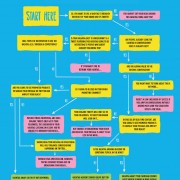Marketing with Twitter Chats

If you’re looking to widen your audience and generate leads, Twitter chats can be a strong tool to boost your marketing outcomes.
Twitter chats are open and moderated conversations that use a significant hashtag for a certain topic, ie: #ChatWithEastline or #ELMchat, where participants usually filter conversations based on the hashtag to easily follow the chat.
Include a Twitter chat in your marketing strategies to help you reach your followers and their followers. A successful chat can introduce you to hundreds of potential leads.
Below are six ways Twitter chats can help you reach a bigger audience and enhance brand awareness:
1- Use Crowd Sourcing For Content Ideas
Collect information and opinions from a lot of people at once as you ask chatters about their needs and wants. Don’t forget to take notes and finally use their input to give them what they want.
2- Get New Leads
Answer questions, provide useful information and engage with your followers. Promote your upcoming Twitter chat to appeal to a bigger audience. Attract new leads by hosting a general themed fun Twitter chat, include giveaways or tackle a common problem and show your knowledge.
3- Build Your Social Reach
Twitter chats are a great way to leverage your existing followers as a successful one attracts a large group of tweeps whose followers are watching the conversation. When fans share your content or product, they’re giving it their approval, which will have their friends considering your brand when they’re ready to take action.
4- Create a Community Through Live Tweets
At in-person events, try live tweeting and invite your followers to join the event’s hashtag and share their ideas and opinions about the topic at hand.
5- Monitor Your Success
Track your Twitter chat successes from the first day as when you determine the popularity of your guests, topics, questions, interactions and hashtag, you can determine what appeals to your followers.
Use the evaluated data to determine successful topics and important ideas to your participants, and use that information to create follow-up content.
6- Increase Your Knowledge
Participating in industry Twitter chats is another way to network locally and internationally, expand your contacts base and discover and discuss “holes” in the industry.



 Using
Using 








 In the MENA region, we always seem slower in catching up with the rest of the world when it comes to many things, but specifically in technology and its many sub branches. In Lebanon, we have yet to have
In the MENA region, we always seem slower in catching up with the rest of the world when it comes to many things, but specifically in technology and its many sub branches. In Lebanon, we have yet to have 
 For many of us, the idea of just sitting back, writing down your thoughts and ideas, and making enough money to sustain yourself doing that is the ultimate dream. This is what many bloggers out there are doing, and quite successfully.
For many of us, the idea of just sitting back, writing down your thoughts and ideas, and making enough money to sustain yourself doing that is the ultimate dream. This is what many bloggers out there are doing, and quite successfully.
 It’s a good day for us in
It’s a good day for us in 
